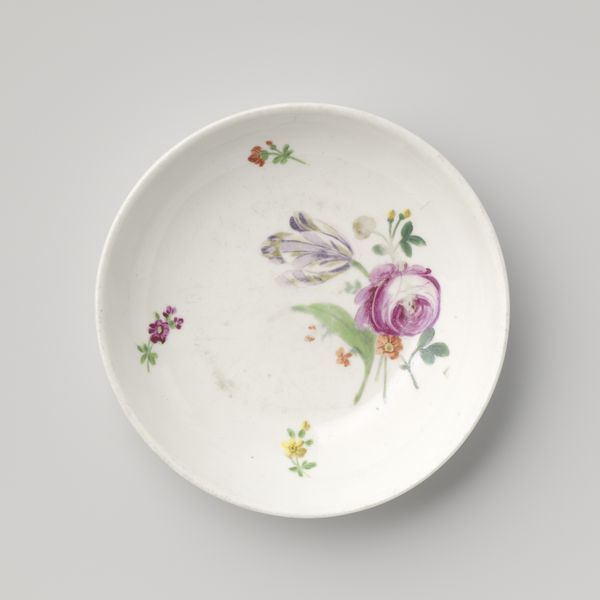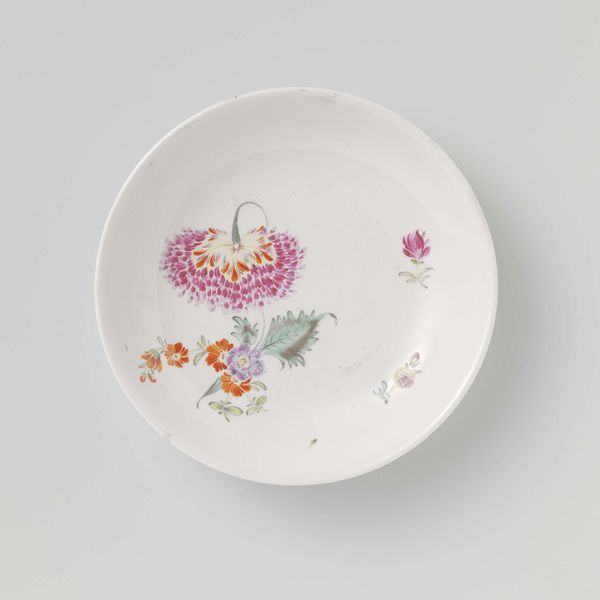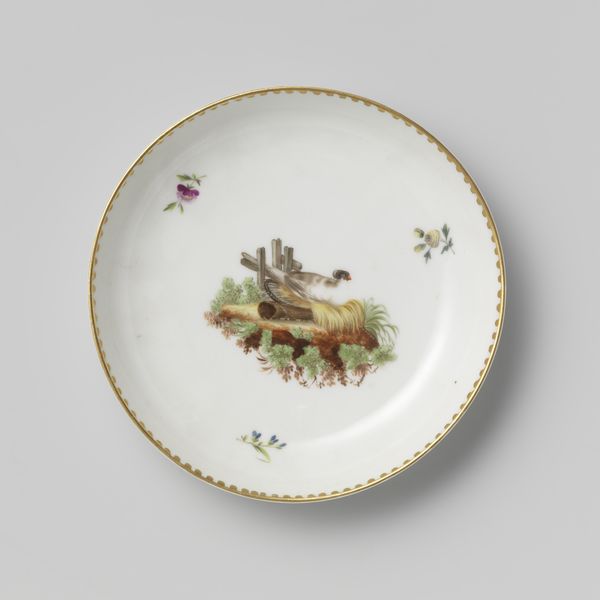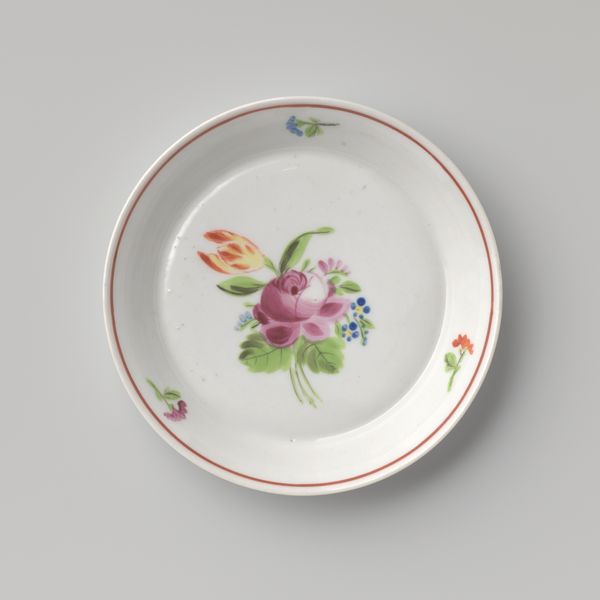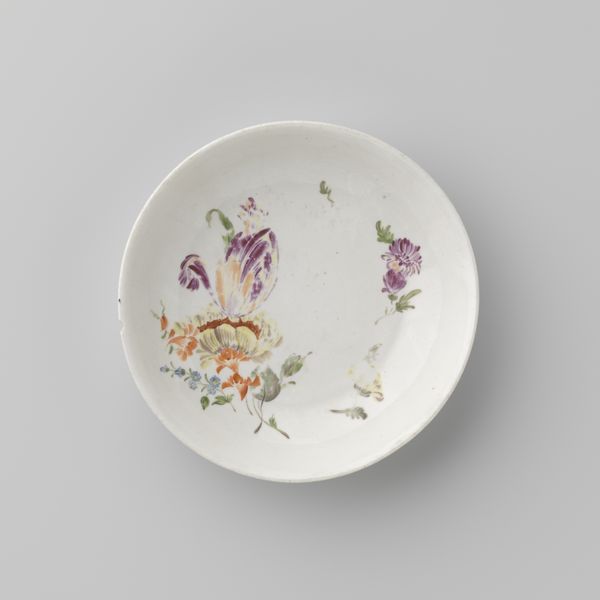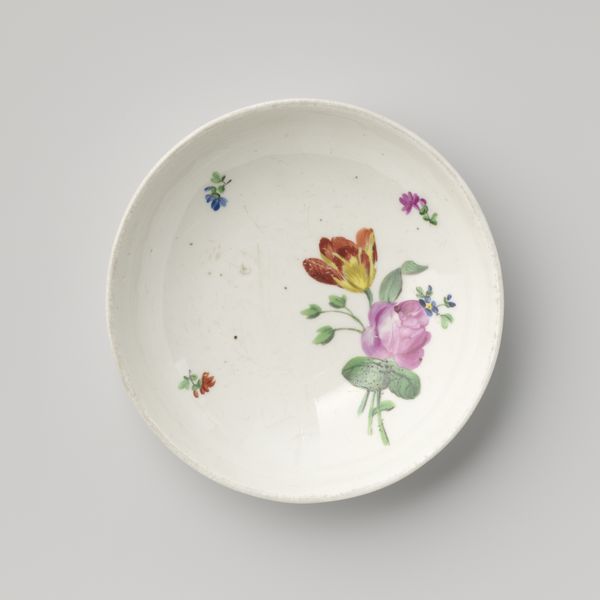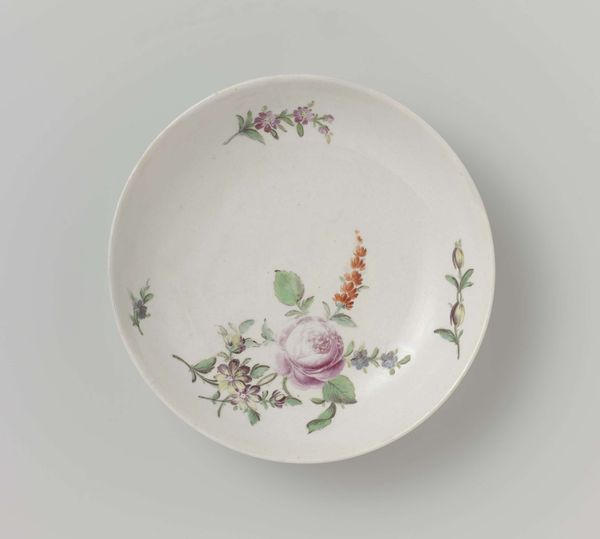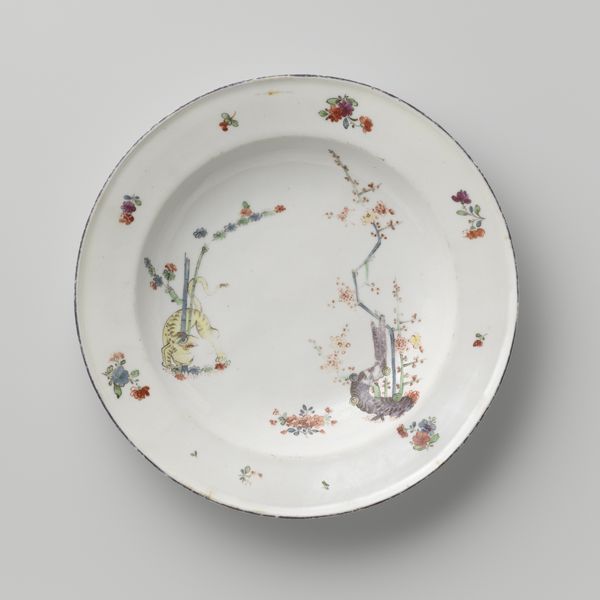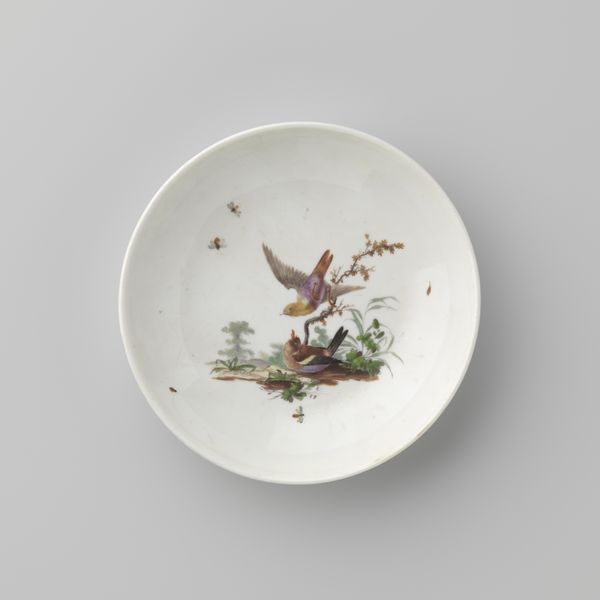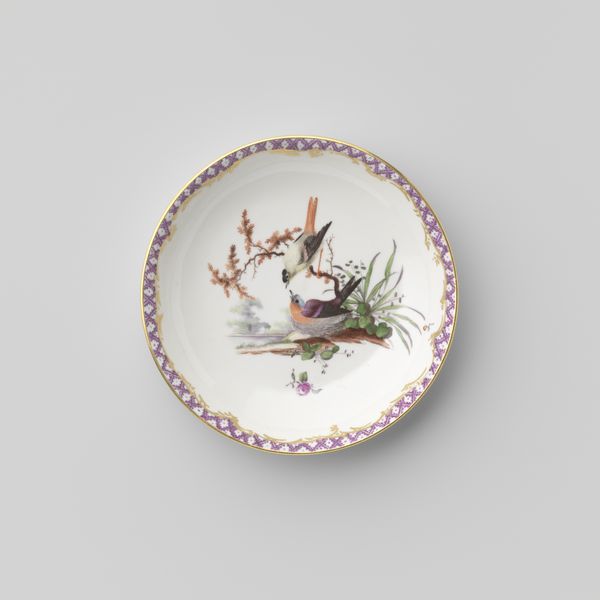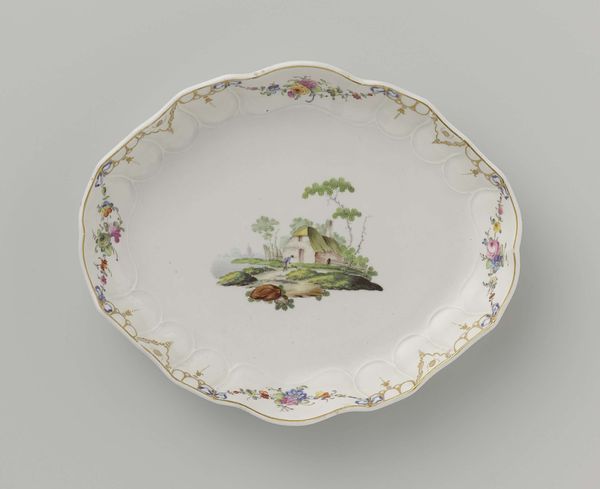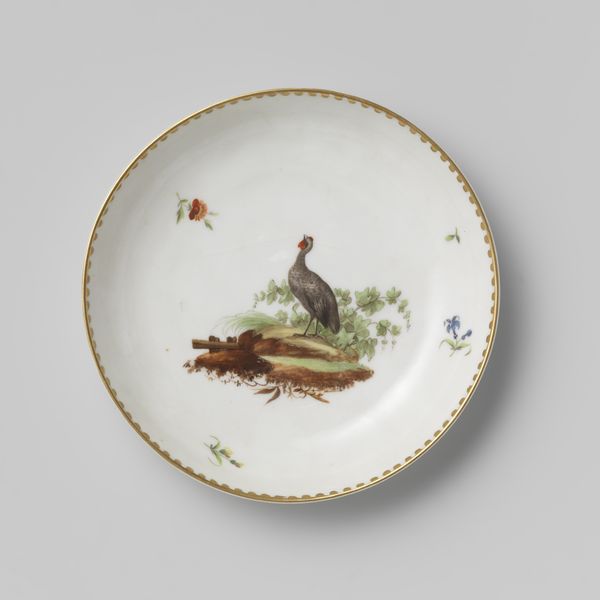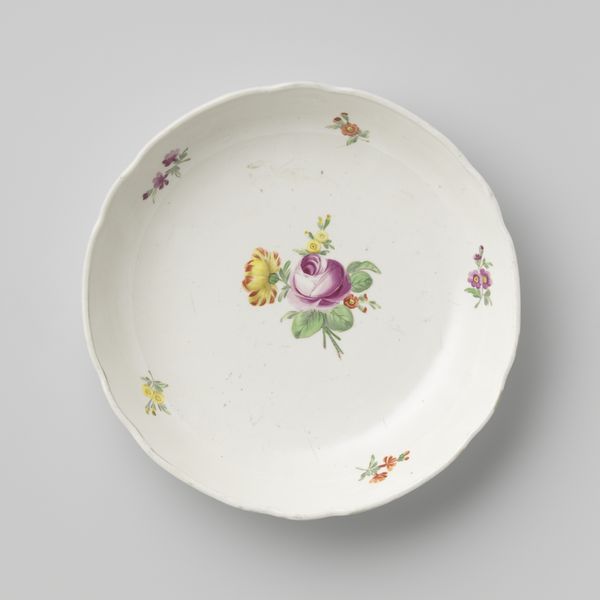
Schotel veelkleurig beschilderd met een man in een landschap c. 1759 - 1771
0:00
0:00
painting, ceramic, porcelain
#
painting
#
landscape
#
ceramic
#
porcelain
#
figuration
#
orientalism
#
genre-painting
#
rococo
Dimensions: height 2.9 cm, diameter 12.1 cm
Copyright: Rijks Museum: Open Domain
Curator: What a delicate scene. This porcelain plate, dating roughly from 1759 to 1771, comes from the Weesper porseleinfabriek. The colorful painting at the center features a man in a stylized landscape. Editor: It has a lovely, wistful quality. The man in his pink coat seems so solitary, almost dreaming within that carefully rendered world. Curator: The style reflects the fashion for chinoiserie at the time, a European interpretation of Chinese and East Asian motifs. Factories like the one in Weesp catered to a market eager for these exotic designs. The image appears influenced by genre paintings from that period. Editor: Absolutely, the details speak volumes. That figure seated beneath the tree immediately calls to mind the traditional scholar in contemplative posture, yet interpreted through a distinctly European Rococo lens. The idealized natural setting behind him almost alludes to a faraway land, even Paradise itself. It’s quite escapist. Curator: You’ve picked up on something key—these porcelains became fashionable items, often presented within aristocratic homes to suggest status, erudition, and worldliness, but this, let's admit, comes with layers of colonial interpretation and exoticism of "the other." Editor: Yes, I think you're absolutely right to bring in this analysis: these symbols were also loaded culturally; they helped construct and also convey identity—perhaps even a kind of projection, if we examine this image using postcolonial critique and cultural memory. Curator: Indeed, they showcase a potent fusion of European artistry, and international fascination—commodifying artistic skill and intercultural exchange to suit 18th century bourgeois desires and display practices. Editor: Seeing it through that historical and symbolic context has deepened my appreciation. Curator: Mine too. It's striking to witness how tastes and their underlying meanings continue to be expressed in our visual lives.
Comments
No comments
Be the first to comment and join the conversation on the ultimate creative platform.

